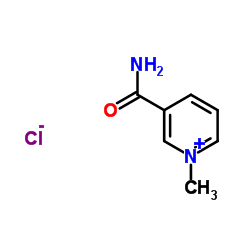Decreased skin-mediated detoxification contributes to oxidative stress and insulin resistance.
Xing-Xing Liu, Chang-Bin Sun, Ting-Tong Yang, Da Li, Chun-Yan Li, Yan-Jie Tian, Ming Guo, Yu Cao, Shi-Sheng Zhou
文献索引:Exp. Diabetes Res. 2012 , 128694, (2012)
全文:HTML全文
摘要
The skin, the body's largest organ, plays an important role in the biotransformation/detoxification and elimination of xenobiotics and endogenous toxic substances, but its role in oxidative stress and insulin resistance is unclear. We investigated the relationship between skin detoxification and oxidative stress/insulin resistance by examining burn-induced changes in nicotinamide degradation. Rats were divided into four groups: sham-operated, sham-nicotinamide, burn, and burn-nicotinamide. Rats received an intraperitoneal glucose injection (2 g/kg) with (sham-nicotinamide and burn-nicotinamide groups) or without (sham-operated and burn groups) coadministration of nicotinamide (100 mg/kg). The results showed that the mRNA of all detoxification-related enzymes tested was detected in sham-operated skin but not in burned skin. The clearance of nicotinamide and N(1)-methylnicotinamide in burned rats was significantly decreased compared with that in sham-operated rats. After glucose loading, burn group showed significantly higher plasma insulin levels with a lower muscle glycogen level than that of sham-operated and sham-nicotinamide groups, although there were no significant differences in blood glucose levels over time between groups. More profound changes in plasma H(2)O(2) and insulin levels were observed in burn-nicotinamide group. It may be concluded that decreased skin detoxification may increase the risk for oxidative stress and insulin resistance.
相关化合物
| 结构式 | 名称/CAS号 | 分子式 | 全部文献 |
|---|---|---|---|
 |
3-氨基甲酰-1-甲基氯化吡啶
CAS:1005-24-9 |
C7H9ClN2O |
|
¹H nuclear magnetic resonance based metabolic urinary profil...
2011-03-01 [Clin. Biochem. 44(4) , 293-9, (2011)] |
|
Nicotinamide supplementation induces detrimental metabolic a...
2013-12-01 [Br. J. Nutr. 110(12) , 2156-64, (2013)] |
|
Single bout of endurance exercise increases NNMT activity in...
2012-01-01 [Pharmacol. Rep. 64(2) , 369-76, (2012)] |
|
Nicotinamide N-methyltransferase (NNMT) and 1-methylnicotina...
2010-01-01 [Pharmacol. Rep. 62(3) , 483-93, (2010)] |
|
Excessive nicotinic acid increases methyl consumption and hy...
2013-01-01 [Pharm. Biol. 51(1) , 8-12, (2013)] |